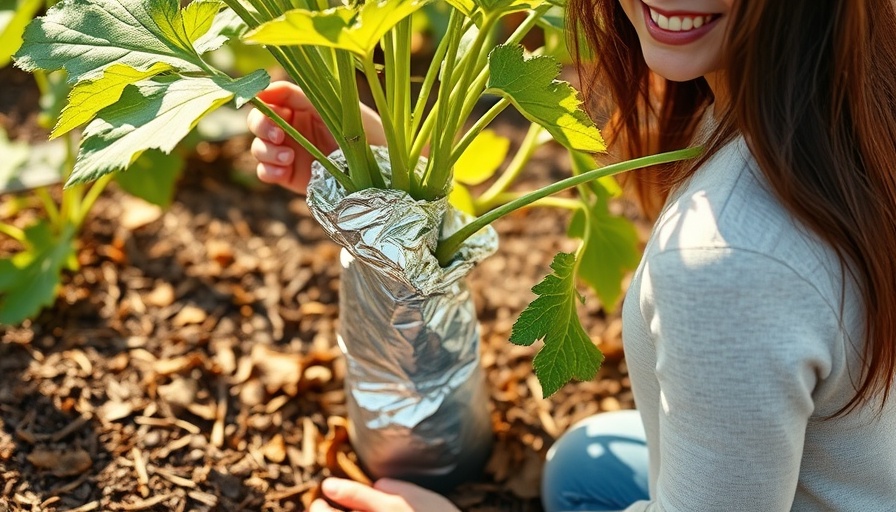
Understanding the Squash Vine Borer: A Garden Nightmare
Every gardener has faced their fair share of pests, but few are as notorious as the squash vine borer. These seemingly innocuous bugs can wreak havoc on a gardener’s hard work as they invade beloved summer squash and zucchini plants. As discussed in the video 99% of Gardeners Make This Mistake (And Pay for It Next Year), identifying and preventing the squash vine borer before they become a problem is not just important; it’s essential for any passionate gardener.
In '99% of Gardeners Make This Mistake (And Pay for It Next Year)', the video discusses the critical role of managing squash vine borers, inspiring a deeper dive into effective prevention and treatment methods.
Identification: The Red Flags of Squash Vine Borer Infestation
The first step in combating any pest is understanding what you’re up against. The squash vine borer is often a silent enemy—the larvae can penetrate deep into stems, leading to wilting plants without immediate warning. Look for bright red eggs clustered at the base of leaves and sawdust-like material at the plant's base, signifying their destructive presence. Especially between late June and early July, when temperatures hover between 21°C and 27°C, regular inspections are crucial. If ignored, these pests will multiply and lay waste to your squash plants.
Effective Prevention Strategies for Okanagan Gardeners
As Okanagan gardeners, it's vital to employ proactive measures to protect your squash crops. Besides frequent inspections, consider non-chemical preventative strategies like row covers, which can be a simple and effective deterrent against adult moths. Additionally, using tin foil wrapped around the base of your squash plants can confuse these pests while providing an unusual but effective barrier. Implementing these measures before the pests emerge makes a world of difference.
The Art of Companion Planting
One of the most organic ways to safeguard your squash plants is through companion planting. The video presents trap cropping as an excellent solution—planting blue hubbard squash nearby creates a lure for the vine borers, allowing you to mitigate the damage done to your main crops. This method not only improves the health of your garden but fosters a companion planting ecosystem that can deter more pests in the long run.
Dealing with Established Infestations
If you find yourself already grappling with a squash vine borer infestation, don’t lose heart. The video suggests that cutting the stem and accessing infested areas can save your plants. With some careful re-rooting, you may still salvage a harvest. For extensive damage, removing infected vines is crucial. Always remember: don't compost these plants! Instead, toss them in the garbage to prevent the cycle from repeating.
Post-Season Strategies for Future Success
Once the growing season ends, the squash vine borer’s challenge shifts to how you manage your soil. The video emphasizes the importance of tilling soil to expose pupae to colder temperatures and predatory organisms. Additionally, consider solarizing your garden soil during the summer to eliminate any lingering pests. These strategies not only safeguard your garden against next year’s foes but also restore soil health.
Timing is Everything
Planning your planting schedule is crucial, especially amid the burst of summer growth. As indicated in the video, planting late May to early June aligns your crops with the natural life cycles of squash vine borers. This timing allows for a strategic crop rotation plan, which significantly reduces the chances of infestation on repeat plantings of the same crops.
Community Wisdom and Experience
Engaging with fellow gardeners can unveil a wealth of insights, as many encounter similar hurdles. Sharing stories about how they handle squash vine borer issues not only fuels a sense of community but strengthens the gardening network. From natural remedies to creative pest control solutions, the shared knowledge offers valuable resources that can enhance your gardening experience.
In light of these insights from the video 99% of Gardeners Make This Mistake (And Pay for It Next Year), it’s clear that with vigilance, informed strategy, and community action, Okanagan gardeners can conquer the threat of the squash vine borer. Let's protect our gardens together for a bountiful harvest next season!
 Add Row
Add Row  Add
Add 




Write A Comment